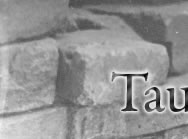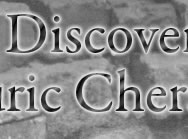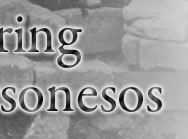| 1. Report of the excavation of rural settlement near Zarya Svobody village in 1974 (upper stream of Belbek river). 2. List of finds compiled in the field |
| Year: 1974 |
|
Author
Romanchuk A. I.
|
|
Description
The excavation of rural settlement near the present-day Zarya Svobody village were conducted by the force of students of the Historic Faculty of the Ural State University, the team headed by the candidate of history A. I. Romanchuk. The works were conducted from July 15 to September 5. 1974 excavations have supplied interesting materials allowing to draw conclusions regarding the cultural and economic image of the given settlement. A series of monuments from different periods have been investigated in the settlement area. First of all, there are sites of two churches discovered in the central excavation trench located in the second terrace of 138.7 hill located to the north-west of Belbek river. This area is 85 m to the south-west of the church excavated in 1973. 65 m to the north-west of the same church, there were investigations of a late mediaeval house, and 40 m to the west of the central area there was a mediaeval estate. Besides the excavations, there also was a visual survey of the settlement area to discover remains of buildings. Unfortunately, this survey did not give positie results. Actually, a collection of roof-tiles have been uncovered close to the churches excavated in 1974, and numerous shards of kitchen- and table-ware and amphorae decorated with combed corrugation on shoulders were unearthed down the hill, in a cut of a highway under construction. The excavation of rural settlementin the lower reach of Belbek river, near the present-day Zarya Svobody village, allow one to draw some preliminary conclusions. First of all: the lower reach of Belbek river, similarly to more remote areas of the Crimean mountains (middle and upper reach of this river), was populated in the eighth and ninth centuries. A group of rural settlements from the same period has been discovered not far from the above described one due to reconnaissance by O. Ya. Savelya, the employee of the Chersonesos museum. It is indicative that the life in the settlement ceased in the ninth and revived only in the thirteenth century. In the eighth and ninth centuries, the settlement did not have any fortification, but it was rather large, as we can see from the ruins of three-naved church. The presence of imported transport ware, that is amphorae with zones of corrugation, is an evidence of the settlement dwellers with other centres, first of all with Chersonesos, where there is a site of the eighth to ninth century pottery shop hat produced amphorae of the type. It is possible that the cultural connections were larger, so the ground plan of the three-naved church is close to that of the church studied by V. M. Baben'chikov in Tepsen'. The more so, a part of the population could migrate from the East Crimea to the West Crimea, where similar gravestones appeared. These facts allow me to state that the valleys of the south-west Crimea became to revive in the early Middle Ages, and that process considerably intensified in the eighth and ninth centuries due to the inflow of a new population from the east Taurica. To some extent, similar (but not the same) marks on roof-tiles supply evidence of relations between different remote areas. At the same time, difference between such marks are the indicator of the development of local craft.
Trade in the later period did not have barter nature, so there were two silver Tatar coins discovered in the dwelling house.
Text of the report, table of burials, list of finds compiled in the fileds, covering 46 pages. NPTC Archive. File no. 1723.
|





